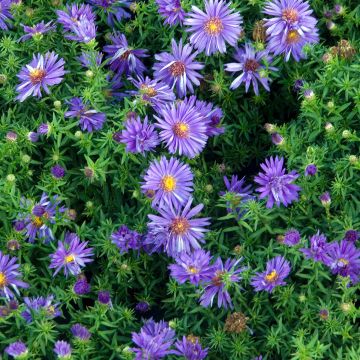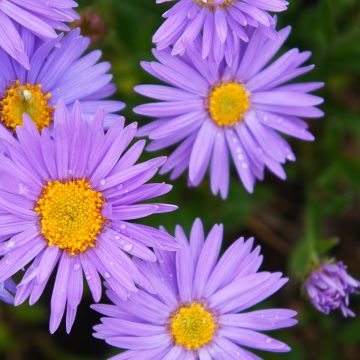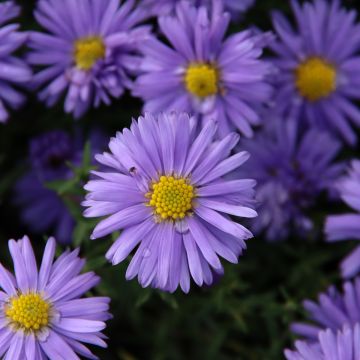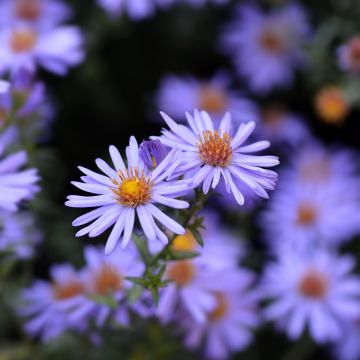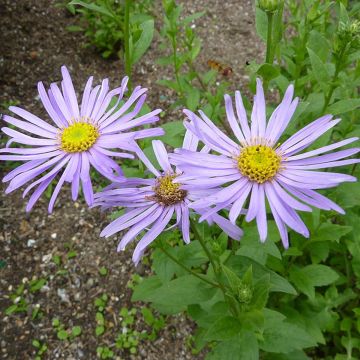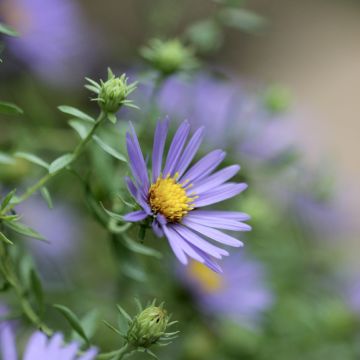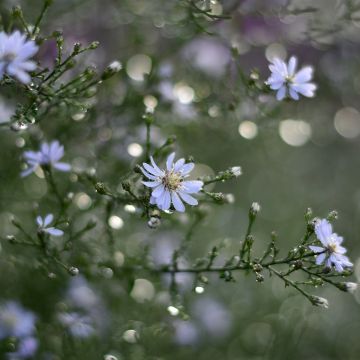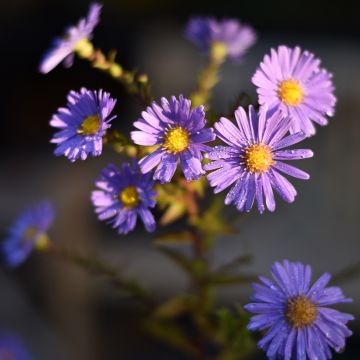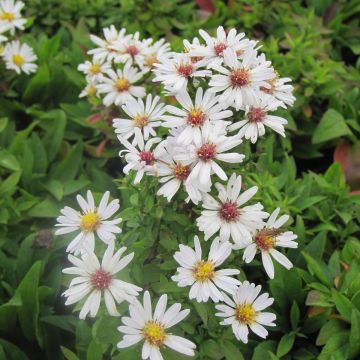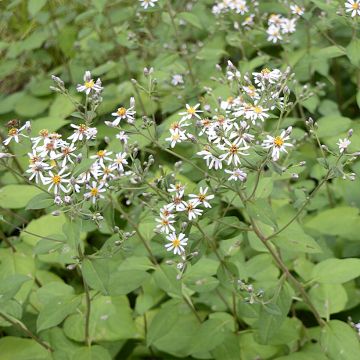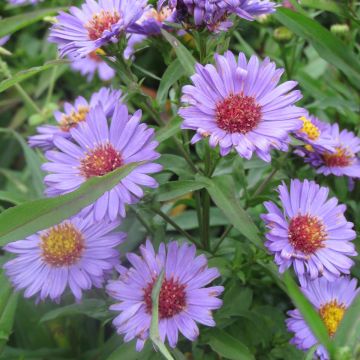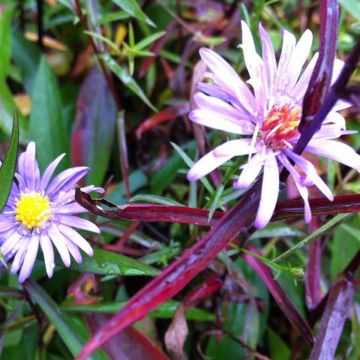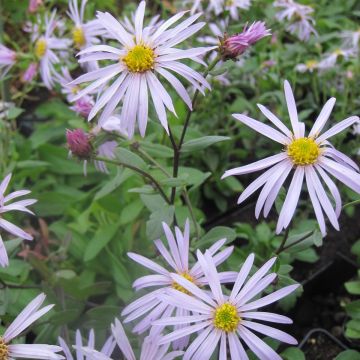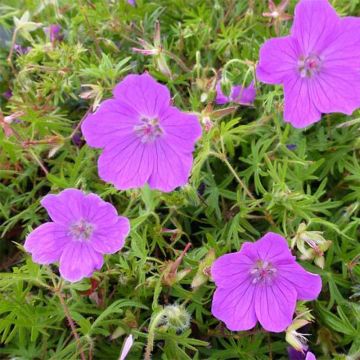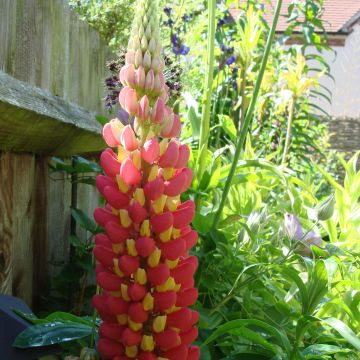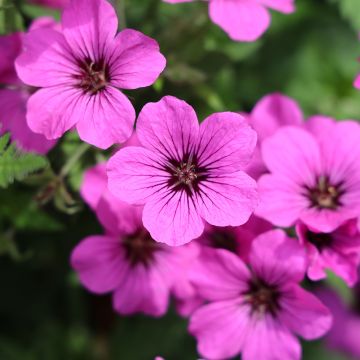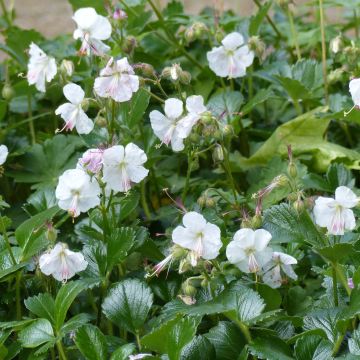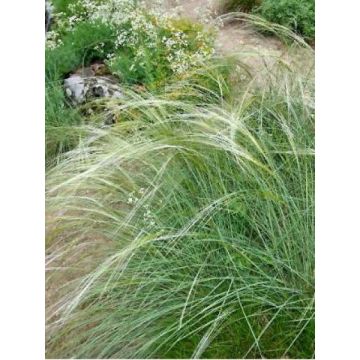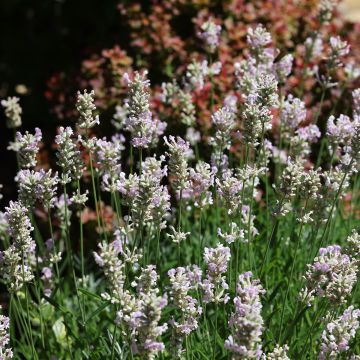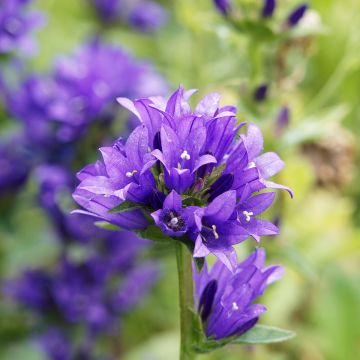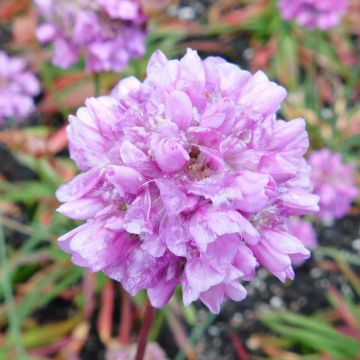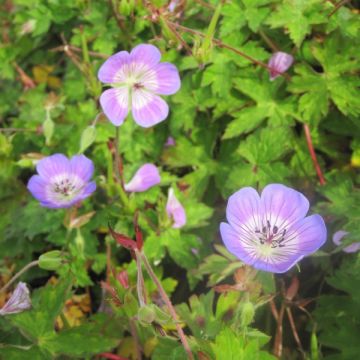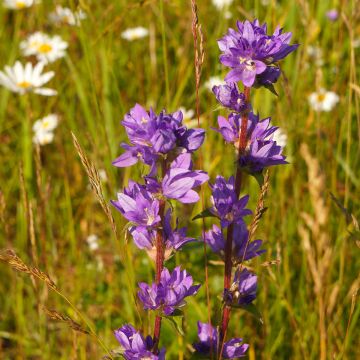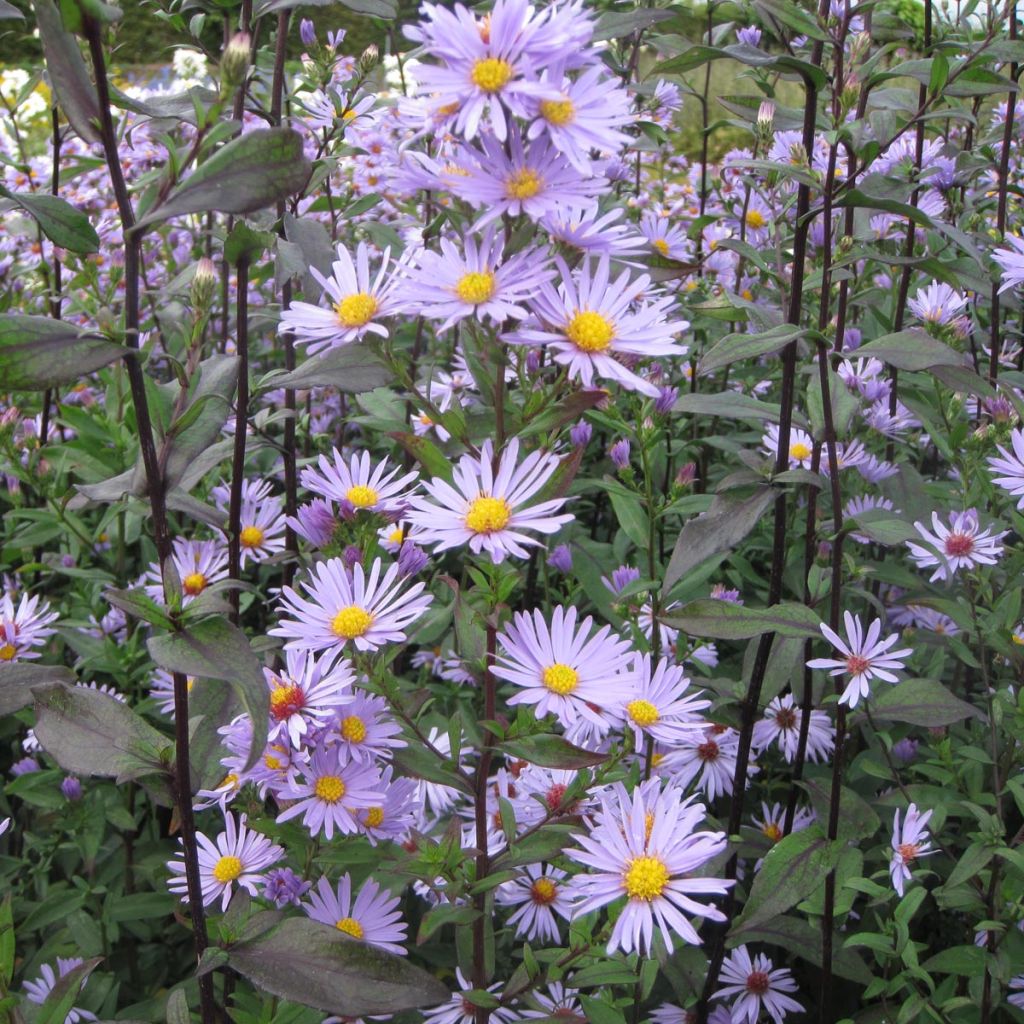

Aster laevis Calliope
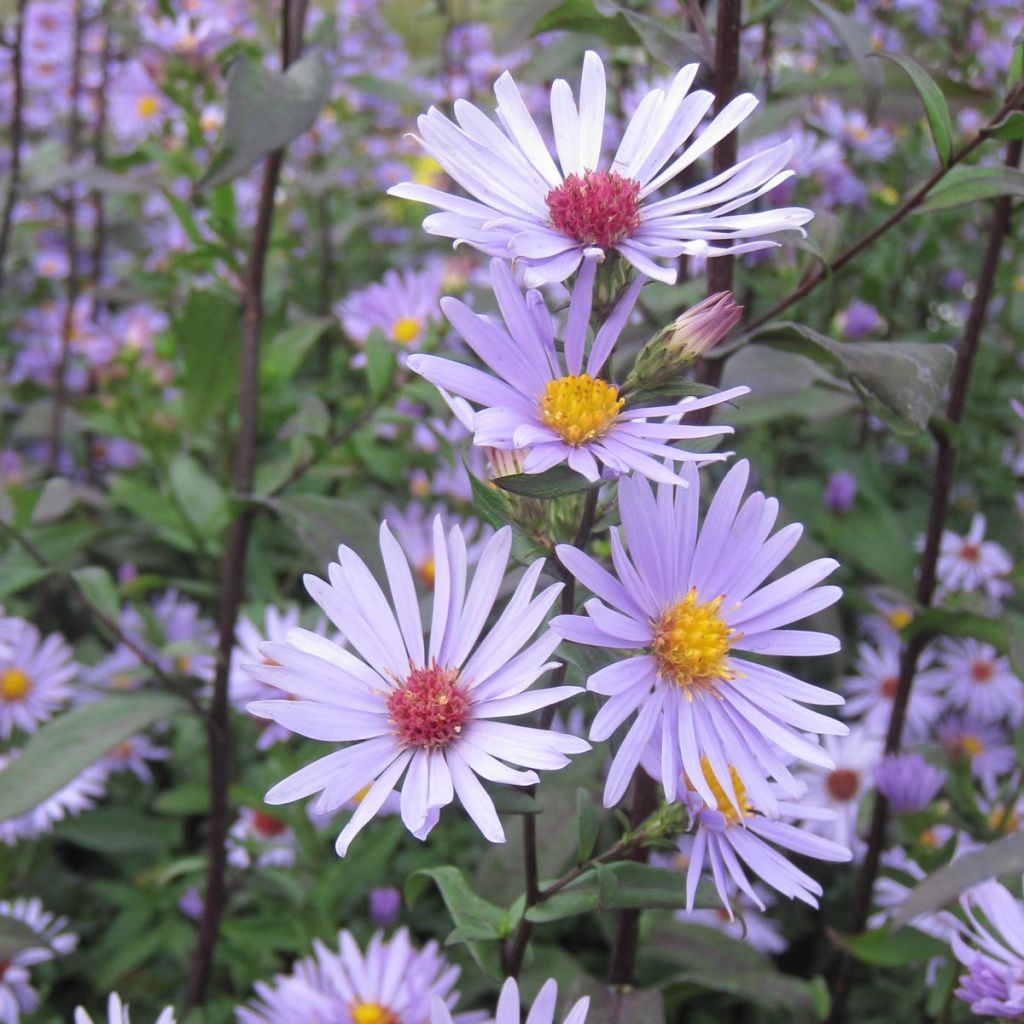

Aster laevis Calliope
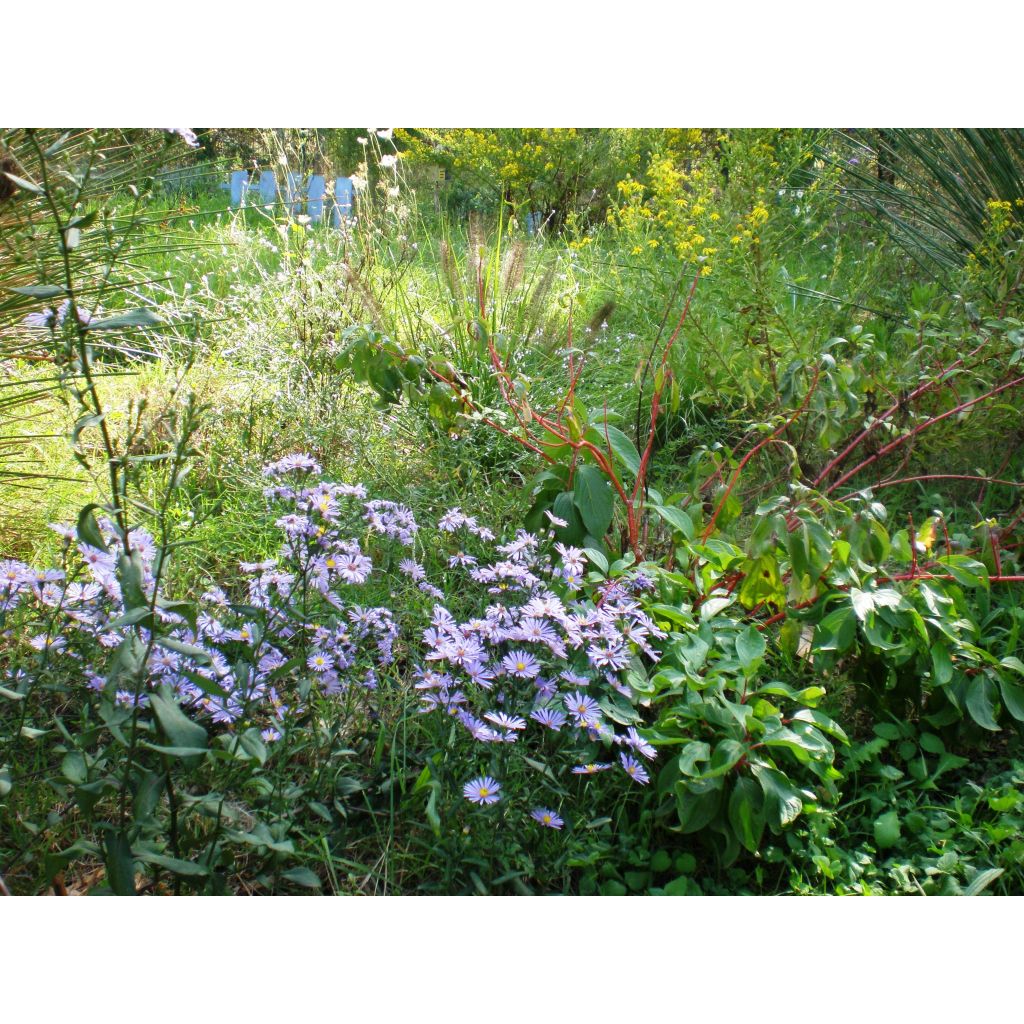

Aster laevis Calliope
Aster laevis Calliope
Aster laevis Calliope
Smooth Aster, Smooth Blue Aster
Why not try an alternative variety in stock?
View all →This plant carries a 12 months recovery warranty
More information
We guarantee the quality of our plants for a full growing cycle, and will replace at our expense any plant that fails to recover under normal climatic and planting conditions.
From €5.90 for pickup delivery and €6.90 for home delivery
Express home delivery from €8.90.
Does this plant fit my garden?
Set up your Plantfit profile →
Description
Aster laevis Calliope, also known as Smooth Aster or Giant Fall Aster, is a massive aster of great ornamental value, both original and precious. This variety is distinguished by its black stems and purple foliage. It offers abundant and prolonged flowering in autumn, like a cloud of small blue-mauve stars with a golden heart that turns crimson. This large, very hardy and robust perennial requires full sun to flourish and adapts to all soils that are not too heavy, and even occasionally dry. It is a plant with a wild appearance, robust but very refined, truly superb in the back of a border.
Aster laevis Calliope belongs to the Asteraceae family. Aster laevis, from which it originates, is native to North America, specifically Florida. This perennial shows an upright and bushy tufted habit from spring onwards. It will reach a minimum height of 130 cm (51in) when in flower and will spread to 70 cm (28in), with very rapid growth. The airy and generous flowering, which bees and butterflies love, lasts from August to October. The light blue-mauve flower heads measure 4 cm (2in) in diameter. The heart is bright yellow and quickly takes on a wine-like hue. The stems are strong, branching, and black. The foliage is purple with bluish highlights and a wine-red line in the centre. The basal leaves are lanceolate and dentate, while the stem leaves are clasping. This plant spreads rapidly via rhizomes.
It is impossible to imagine our gardens without asters in the beds or borders. This one is particularly ornamental. It pairs very well with intense magenta Salvia microphylla, 'Lemon Queen' Sunflowers, and large Rudbeckias, for example. The aster genus is extremely diverse, coming in a wide range of varied colours and sizes. Try combining pink and blue asters with the 'Grace' Cotinus or dwarf winged Euonymus: the colour combination is astounding. These plants also make excellent cut flowers. Depending on the cultivars, it is possible to extend the flowering period right from spring to the end of autumn, allowing gardening enthusiasts to enjoy these lovely daisy-like flowers for a large part of the year.
Report an error about the product description
Aster laevis Calliope in pictures
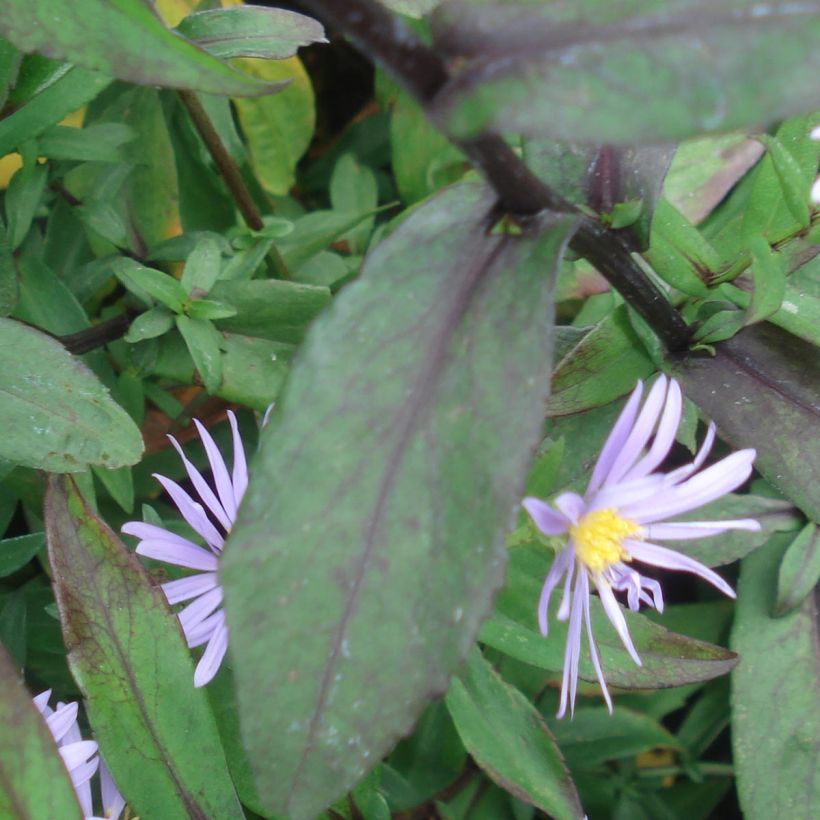

Flowering
Foliage
Plant habit
Botanical data
Aster
laevis
Calliope
Asteraceae
Smooth Aster, Smooth Blue Aster
Cultivar or hybrid
Other Asters
Planting and care
Plant Aster laevis Calliope in autumn or spring in a soil that is not too acidic or too alkaline, light, well-worked, sandy or loamy, moist to occasionally dry, not too poor. A heavy and wet soil shortens its lifespan. It appreciates full sun. It may be necessary to stake the plant depending on its growth (a rich soil will produce a lush but less sturdy plant). Avoid strong winds that would flatten the clumps. Once established, avoid moving it as it does not tolerate change well. In a border, leave at least 80 cm (32in) spacing around the plant. Divide clumps every three or four years to keep them floriferous. This aster may be susceptible to powdery mildew if planted in a soil that is too dry and too poor.
Planting period
Intended location
Care
-
, onOrder confirmed
Reply from on Promesse de fleurs
Summer flowering perennials
Haven't found what you were looking for?
Hardiness is the lowest winter temperature a plant can endure without suffering serious damage or even dying. However, hardiness is affected by location (a sheltered area, such as a patio), protection (winter cover) and soil type (hardiness is improved by well-drained soil).

Photo Sharing Terms & Conditions
In order to encourage gardeners to interact and share their experiences, Promesse de fleurs offers various media enabling content to be uploaded onto its Site - in particular via the ‘Photo sharing’ module.
The User agrees to refrain from:
- Posting any content that is illegal, prejudicial, insulting, racist, inciteful to hatred, revisionist, contrary to public decency, that infringes on privacy or on the privacy rights of third parties, in particular the publicity rights of persons and goods, intellectual property rights, or the right to privacy.
- Submitting content on behalf of a third party;
- Impersonate the identity of a third party and/or publish any personal information about a third party;
In general, the User undertakes to refrain from any unethical behaviour.
All Content (in particular text, comments, files, images, photos, videos, creative works, etc.), which may be subject to property or intellectual property rights, image or other private rights, shall remain the property of the User, subject to the limited rights granted by the terms of the licence granted by Promesse de fleurs as stated below. Users are at liberty to publish or not to publish such Content on the Site, notably via the ‘Photo Sharing’ facility, and accept that this Content shall be made public and freely accessible, notably on the Internet.
Users further acknowledge, undertake to have ,and guarantee that they hold all necessary rights and permissions to publish such material on the Site, in particular with regard to the legislation in force pertaining to any privacy, property, intellectual property, image, or contractual rights, or rights of any other nature. By publishing such Content on the Site, Users acknowledge accepting full liability as publishers of the Content within the meaning of the law, and grant Promesse de fleurs, free of charge, an inclusive, worldwide licence for the said Content for the entire duration of its publication, including all reproduction, representation, up/downloading, displaying, performing, transmission, and storage rights.
Users also grant permission for their name to be linked to the Content and accept that this link may not always be made available.
By engaging in posting material, Users consent to their Content becoming automatically accessible on the Internet, in particular on other sites and/or blogs and/or web pages of the Promesse de fleurs site, including in particular social pages and the Promesse de fleurs catalogue.
Users may secure the removal of entrusted content free of charge by issuing a simple request via our contact form.
The flowering period indicated on our website applies to countries and regions located in USDA zone 8 (France, the United Kingdom, Ireland, the Netherlands, etc.)
It will vary according to where you live:
- In zones 9 to 10 (Italy, Spain, Greece, etc.), flowering will occur about 2 to 4 weeks earlier.
- In zones 6 to 7 (Germany, Poland, Slovenia, and lower mountainous regions), flowering will be delayed by 2 to 3 weeks.
- In zone 5 (Central Europe, Scandinavia), blooming will be delayed by 3 to 5 weeks.
In temperate climates, pruning of spring-flowering shrubs (forsythia, spireas, etc.) should be done just after flowering.
Pruning of summer-flowering shrubs (Indian Lilac, Perovskia, etc.) can be done in winter or spring.
In cold regions as well as with frost-sensitive plants, avoid pruning too early when severe frosts may still occur.
The planting period indicated on our website applies to countries and regions located in USDA zone 8 (France, United Kingdom, Ireland, Netherlands).
It will vary according to where you live:
- In Mediterranean zones (Marseille, Madrid, Milan, etc.), autumn and winter are the best planting periods.
- In continental zones (Strasbourg, Munich, Vienna, etc.), delay planting by 2 to 3 weeks in spring and bring it forward by 2 to 4 weeks in autumn.
- In mountainous regions (the Alps, Pyrenees, Carpathians, etc.), it is best to plant in late spring (May-June) or late summer (August-September).
The harvesting period indicated on our website applies to countries and regions in USDA zone 8 (France, England, Ireland, the Netherlands).
In colder areas (Scandinavia, Poland, Austria...) fruit and vegetable harvests are likely to be delayed by 3-4 weeks.
In warmer areas (Italy, Spain, Greece, etc.), harvesting will probably take place earlier, depending on weather conditions.
The sowing periods indicated on our website apply to countries and regions within USDA Zone 8 (France, UK, Ireland, Netherlands).
In colder areas (Scandinavia, Poland, Austria...), delay any outdoor sowing by 3-4 weeks, or sow under glass.
In warmer climes (Italy, Spain, Greece, etc.), bring outdoor sowing forward by a few weeks.

































